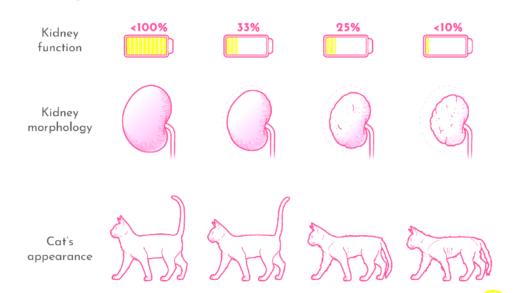Flood myths are significant across cultures, reflecting shared human experiences with natural disasters. They influence cultural beliefs, inspire art, and provide moral lessons. These narratives also offer modern society insights on environmental awareness, resilience, and community unity, emphasizing the need to adapt to climate challenges. Understanding flood myths is crucial for appreciating their historical and contemporary relevance.
Flood Myths Around the World
Flood myths are prevalent across various cultures, showcasing the universal nature of this narrative. These flood myths not only reflect the historical experiences of societies but also their cultural values and beliefs. For instance:
- The Epic of Gilgamesh: This ancient Mesopotamian tale features Utnapishtim, who builds an ark to survive a divine flood, paralleling the biblical Noah.
- Hindu Mythology: In the Matsya Purana, Vishnu takes the form of a fish to save humanity from a catastrophic flood.
- Native American Legends: Various tribes, such as the Ojibwe and the Iroquois, have flood stories that often symbolize purification and rebirth.
These diverse narratives illustrate how different societies interpret natural disasters through their unique lenses. Understanding these myths helps in recognizing the shared human experience of facing calamities and the need for survival.
Comparing Flood Stories
Analyzing flood narratives reveals both similarities and differences that reflect each culture’s values. Common elements often include:
- Divine Intervention: Many stories feature gods or supernatural forces causing the flood, highlighting the cultural belief in higher powers controlling nature.
- Survivor Stories: Figures like Noah and Utnapishtim serve as archetypes of resilience and faith amidst chaos.
- Restoration Themes: Post-flood rebirth emphasizes renewal and hope, demonstrating a cultural inclination towards optimism.
While the motifs may vary, the core messages often resonate with the values of community, survival, and morality. This comparative analysis shows how flood myths encapsulate the essence of cultural identities.
Scientific Evidence of Floods
Supporting the narratives of flood myths is a wealth of archaeological and geological evidence. Findings include:
- Stratigraphic Layers: Geological studies reveal sediment layers consistent with massive flood events, such as those found in the Black Sea region.
- Archaeological Sites: Excavations in ancient Mesopotamia uncover evidence of sudden destruction attributed to flooding, corroborating stories from texts like the Epic of Gilgamesh.
- Paleo-climatic Data: Research indicates significant climate changes that could have triggered historical floods, supporting the idea that these myths are rooted in real events.
This scientific backing offers a factual basis for understanding how flood myths were born from actual experiences of communities facing natural disasters. The interplay between myth and history enriches our comprehension of human resilience.
Historians’ Perspectives on Flood Myths
Flood myths serve as valuable historical documents, offering insights into the beliefs and experiences of ancient civilizations. Historians analyze these narratives to understand how communities interpreted significant events, often linking myths to actual historical floods. For instance:
- Historical Context: Historians often place these myths within the broader context of the civilization’s history, examining how they relate to societal values and environmental challenges.
- Myth as Memory: Some historians propose that these myths act as collective memories, preserving the trauma of real flood events that shaped a culture’s identity.
- Symbolic Meaning: The symbolism within flood myths—such as rebirth and divine punishment—can reveal much about the cultural psyche and social norms of the time.
By interpreting flood myths in relation to historical events, historians uncover a complex web of beliefs that highlight humanity’s struggle against nature and the search for meaning amid chaos.
Natural Disasters as Triggers for Flood Myths
Natural disasters often trigger the formation of flood myths, as communities seek to explain catastrophic events. Historical evidence suggests that significant geological and meteorological phenomena have influenced these narratives:
- Earthquakes: In some regions, earthquakes have led to tsunamis or landslides that caused flooding, prompting communities to craft stories that explain their devastation.
- Heavy Rainfall: Prolonged periods of rain, especially during monsoon seasons, can result in floods, inspiring myths that encapsulate these experiences.
- Glacial Melting: Melting glaciers at the end of ice ages contributed to massive flooding events, which ancient peoples may have interpreted as divine punishment or cleansing.
By examining these natural triggers, we can see how flood myths may be grounded in real environmental events, reflecting humanity’s need to rationalize their experiences with nature.
Climate Change Reflected in Ancient Flood Narratives
Climate change is a recurring theme in many flood myths, as ancient cultures attempted to make sense of the shifting climates they faced. This connection can be seen in various ways:
- Extreme Weather Patterns: Stories of floods often coincide with periods of significant climate change, suggesting that ancient peoples noticed and responded to these shifts.
- Cultural Adaptation: Myths may reflect the adaptive strategies societies employed in response to changing environments, emphasizing resilience and renewal.
- Lessons for Today: The narratives serve as cautionary tales, warning future generations about the potential consequences of neglecting environmental changes.
Understanding how climate change is woven into these ancient stories provides valuable insights into humanity’s historical relationship with the environment, as well as implications for contemporary discussions on climate resilience.
Cultural Impact of Flood Myths
Flood myths have profoundly shaped cultural beliefs and practices across various societies. These narratives serve as more than mere stories; they are woven into the fabric of cultural identity and community values. For example:
- Rituals and Ceremonies: Many cultures have developed rituals around flood myths, such as ceremonies to appease deities believed to control water and storms. These practices often emerge as a means to seek protection from natural disasters.
- Art and Literature: Flood myths inspire countless artistic expressions, from ancient carvings to modern literature. They often symbolize themes of destruction and renewal, reflecting the cyclical nature of life and death.
- Moral Lessons: The stories frequently convey moral teachings, emphasizing virtues such as courage, cooperation, and respect for nature. Communities use these myths to instill values in future generations.
Through these various expressions, flood myths influence not just individual beliefs but also the collective consciousness of cultures, underscoring humanity’s shared experiences with natural disasters.
Modern Implications of Ancient Flood Narratives
Ancient flood stories hold valuable lessons for contemporary society. As we face increasing environmental challenges, these narratives can provide insights into our relationship with nature and the consequences of neglecting it. Key implications include:
- Environmental Awareness: Flood myths remind us of the power of nature and the importance of respecting it. They can serve as cautionary tales about the potential repercussions of climate change and human actions on the environment.
- Resilience and Adaptation: The survival themes present in flood myths highlight humanity’s resilience. They encourage modern societies to adopt adaptive strategies in the face of climate-related disasters.
- Community Unity: Flood narratives often emphasize collective survival and cooperation. This can inspire communities today to come together to address environmental issues, reinforcing the notion that collaboration is essential for overcoming challenges.
By reflecting on these ancient stories, we can draw parallels to our current struggles, reminding us of the enduring human spirit and the need for sustainable practices.
Conclusion
Understanding flood myths offers valuable insights into the intersection of culture, history, and environmental consciousness. These narratives not only reflect the experiences of ancient societies but also provide timeless lessons for modern challenges. By exploring the cultural impact and contemporary implications of these myths, we gain a deeper appreciation for humanity’s resilience and the importance of respecting the natural world.





Comments are closed.